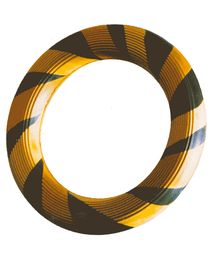
Badminton is a racquet sport played using racquets to hit a shuttlecock across a net. Although it may be played with larger teams, the most common forms of the game are "singles" and "doubles". Badminton is often played as a casual outdoor activity in a yard or on a beach; formal games are played on a rectangular indoor court. Points are scored by striking the shuttlecock with the racquet and landing it within the opposing side's half of the court.
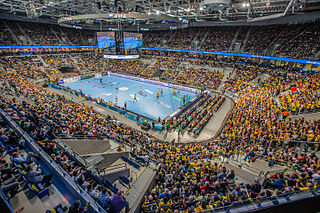
Handball is a team sport in which two teams of seven players each pass a ball using their hands with the aim of throwing it into the goal of the other team. A standard match consists of two periods of 30 minutes, and the team that scores more goals wins.

Korfball is a ball sport, with similarities to netball and basketball. It is played by two teams of eight players with four female players and four male players in each team. The objective is to throw a ball into a netless basket that is mounted on a 3.5 m high pole.

Kabaddi is a contact team sport. Played between two teams of seven players, the objective of the game is for a single player on offence, referred to as a "raider", to run into the opposing team's half of a court, touch out as many of their defenders as possible, and return to their own half of the court, all without being tackled by the defenders, and in a single breath. Points are scored for each player tagged by the raider, while the opposing team earns a point for stopping the raider. Players are taken out of the game if they are touched or tackled, but are brought back in for each point scored by their team from a tag or tackle.

Netball is a ball sport played by two teams of seven players, usually on an indoor court, and is predominantly played by women. It is among a rare number of sports which have been created exclusively for the female sex. Originating in England, UK, in the late 19th century, the sport is played specifically in schools and is most popularly played in Commonwealth nations. The sport also uses outdoor netball courts.

Table tennis, also known as ping-pong and whiff-whaff, is a sport in which two or four players hit a lightweight ball, also known as the ping-pong ball, back and forth across a table using small solid rackets. The game takes place on a hard table divided by a net. Except for the initial serve, the rules are generally as follows: players must allow a ball played toward them to bounce once on their side of the table and must return it so that it bounces on the opposite side at least once. A point is scored when a player fails to return the ball within the rules. Play is fast and demands quick reactions. Spinning the ball alters its trajectory and limits an opponent's options, giving the hitter a great advantage.

Sepak Takraw, or Sepaktakraw, also called kick volleyball, is a team sport played with a ball made of rattan or synthetic plastic between two teams of two to four players on a court resembling a badminton court. It is similar to volleyball and footvolley in its use of a rattan ball and players using only their feet, knees, shoulders, chest and head to touch the ball. Sepak Takraw is often referred to as a mixture of volleyball, due to its use of a net, and association football, as players use their feet.

In sport, a goal may refer to either an instance of scoring, or to the physical structure or area where an attacking team must send the ball or puck in order to score points. The structure of a goal varies from sport to sport, and one is placed at or near each end of the playing field for each team to defend. For many sports, each goal structure usually consists of two vertical posts, called goal posts, supporting a horizontal crossbar. A goal line marked on the playing surface between the goal posts demarcates the goal area. Thus, the objective is to send the ball or puck between the goal posts, under or over the crossbar, and across the goal line. Other sports may have other types of structures or areas where the ball or puck must pass through, such as the basketball hoop.

Basque pelota is the name for a variety of court sports played with a ball using one's hand, a racket, a wooden bat or a basket, against a wall or, more traditionally, with two teams face to face separated by a line on the ground or a net. The roots of this class of games can be traced to the Greek and other ancient cultures.
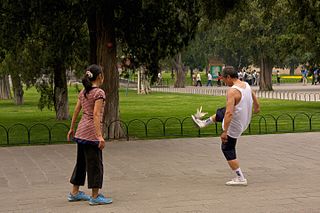
Jianzi, tī jianzi (踢毽子), tī jian (踢毽) or jianqiú (毽球), is a traditional Chinese national sport in which players aim to keep a heavily weighted shuttlecock in the air by using their bodies, apart from the hands, unlike in similar games Peteca and Indiaca. The primary source of jianzi is a Chinese ancient game called Cuju of the Han dynasty 2,000 years ago. Jianzi's competitive sport types are played on a badminton court using inner or outer lines in different types of jianzi's competitive sports, respectively. It can also be played artistically, among a circle of players in a street or park, with the objective to keep the shuttle 'up' and show off skills. In Vietnam, it is known as đá cầu and is the national sport. In the Philippines, it is known as sipa and was also the national sport until it was replaced by arnis in December 2009.
Pallone is the name of several traditional ball games, played in all regions of Italy, with few differences in regulations.

Ball badminton is a sport native to India. It is a racket game, played with a yellow ball made of wool, on a court of fixed dimensions divided by a net. The game was played as early as 1856 by the royal family in Tanjore, the capital of Thanjavur district in Tamil Nadu, India. It enjoys the greatest popularity in India. Ball badminton is a fast-paced game; it demands skill, quick reflexes, good judgment, agility, and the ability to control the ball with one's wrist.
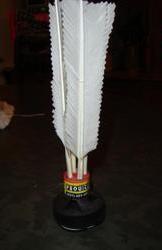
Peteca is a traditional sport in Brazil, played with a "hand shuttlecock" from indigenous origins and reputed to be as old as the country itself. The same name is given to the shuttlecock-object itself.

Padel is a racket sport and typically played in doubles on an enclosed court roughly 25% smaller than the size of a tennis court. Scoring is the same as normal tennis and the balls used are similar but with a little less pressure. The main differences are that the court has walls and the balls can be played off them in a similar way as in the game of squash and that solid, stringless bats are used. The height of the ball being served must be at or below the waist level.
Several sports related to volleyball have become popular. Indoor volleyball and beach volleyball are both events at the Olympics, and sitting volleyball is an event at the Paralympics. Other varieties are localised, or are played at an amateur or informal level.
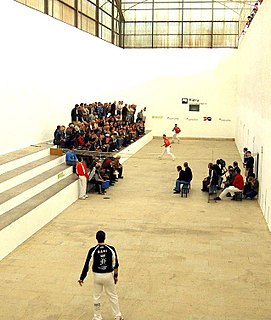
Valencian pilota is a traditional handball sport played in the Valencian Community. Its origins are not known.

Tennikoit, also called ring tennis or tenniquoits, is a sport played on a tennis-style court, with a circular rubber ring hurled over a net separating the two players, with each endeavoring to catch and return the hurled ring into the opponent's court. The sport is played on indoor and outdoor courts.

Throwball is a non-contact ball sport played across a net between two teams of nine players on a rectangular court.
Netball is a ball sport for two teams of seven players; its rules are published in print and online by the International Netball Federation. Games are played on a rectangular court divided into thirds, with a raised goal at each short end. The objective of the game is for teams to score goals, by passing a ball and shooting it into the opposite team's goal ring. Players are assigned "positions" that define their role within the team and restrict their movement on court.
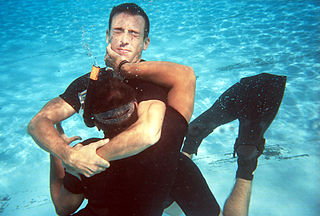
Aquathlon is an underwater sport, where two competitors wearing masks and fins wrestle underwater in an attempt to remove a ribbon from each other's ankle band in order to win the bout. The "combat" takes place in a 5-metre (16 ft) square ring within a swimming pool, and is made up of three 30-second rounds, with a fourth round played in the event of a tie. The sport originated during the 1980s in the former USSR and was first played at international level in 1993. It was recognised by the Confédération Mondiale des Activités Subaquatiques (CMAS) in 2008. Combat aquathlon practice training engagements not only under water, but also afloat, above the water surface, both with or without diving gear, utilizing dummy weapons or barehanded, combined with grappling and choking techniques in order to neutralize or submit the opponent.

